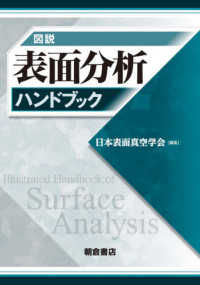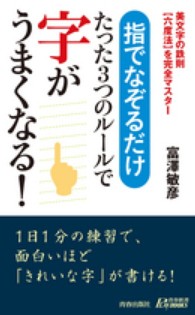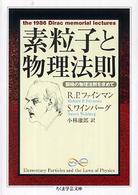- ホーム
- > 洋書
- > 英文書
- > Architecture
Full Description
Measured and Drawn sets out to show how, through working closely with historians, conservators and archaeologists, optimum documentation can be achieved by metric survey. It explains how the balance between precision, cost and time when applying metric technologies to heritage documentation can be achieved by choosing an appropriate method and making sure project information requirements are understood by all from the start.Measured and Drawn examines control, detail and procurement, and concludes with case studies of metric survey projects undertaken on historic buildings and structures ranging from Battle Abbey Courthouse to the nave ceiling at Peterborough Cathedral. It is prepared in sequence with Where on Earth Are We? The Global Positioning System in archaeological field survey (2003), Understanding Historic Buildings: a guide to good recording practice (2006) and 3D Laser scanning for Heritage: advice and guidance to users on laser scanning in archaeology and architecture (2007) as part of an ongoing series of technical guides on heritage documentation.The second edition is prepared in response to the publication of English Heritage's Conservation Principles: policies and guidance for the sustainable management of the historic environment (2008) which has placed documenting and learning from decisions as a core principle, with accessible records recognised as essential to the conservation process. The principles outline the need for adequate records in managing change to significant places.
Contents
Preface to second edition Acknowledgements Summary Resume Zusammenfassung Resumen Arabic summary Chinese summary Japanese summary 1. Introduction 2. Control 3. Metric Survey Techniques 4. Procurement 5. Case Studies 6. Conclusions Appendices Index







